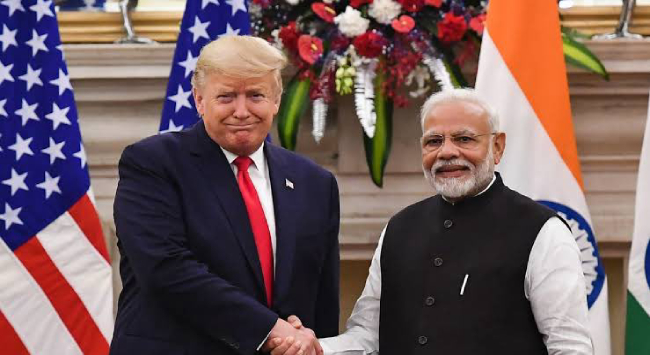Summary
Donald Trump’s decisive victory in the United States’ presidential election ushers opportunities and constraints for Indian diplomacy in the near term.
Donald Trump’s stunning victory in the presidential election in the United States (US) has enormous domestic and international implications. The election’s outcome and the new administration will have a great impact on issues like climate change, trade and technology. How Trump deals with issues like trade, immigration, security and technology will have global effects and economic and national security implications for the US and critical US partners like India. What should India expect?
First, New Delhi appears well placed to handle Trump and his future administration. Having dealt with Trump and dealt with him largely well in his first term (2017-21), compared to US allies and partners, on issues that matter like security and the economy. Trump and India’s Prime Minister Narendra Modi have an affinity towards each other and India will likely bank on the personal relationship, not diplomacy alone, to drive policy. It is likely both leaders will seek to build on that personal rapport to advance shared interests. Indeed, that Trump mentioned Modi positively during the campaign and that both have already spoken since the victory testifies to their personal dynamics and the importance of deepening the US-India partnership. Beyond the leaders, both establishments will also likely have officials who are broadly familiar with one another, their world views and strategic imperatives. That dynamic should bode well to focus directly on the specifics of cooperation from January 2025. The US-India relationship will be driven by interests, not values, over the next four years, marked by a heavy dose of transactionalism and reciprocity.
Second, affinity aside, there remains one broad structural condition that should necessitate and sustain dialogue – their specific relationship and competition with China. China has served as a glue, bringing Washington and New Delhi to negotiate and clinch a series of agreements that help address their security balance with Beijing and the balance of power in the Indo-Pacific. That the Joe Biden administration doubled down on these issues with the Modi government represents another opportunity for New Delhi and Washington once the new administration is sworn in. New Delhi, however, will remain acutely attuned to how a second Trump administration deals with Beijing and whether the bipartisan accord in Washington to remain tough vis-à-vis China will be sustained. The US policy focus to restrict China from accessing and developing cutting-edge technologies through a panoply of export controls will probably sustain. Trump will also likely remain committed to augmenting the US role in Asia to maintain US primacy given Chinese assertiveness and that will find takers in New Delhi just as the Modi government irons out impending border issues with Beijing. A big question for both countries pertains to the Quadrilateral Security Dialogue (Quad) and whether the ongoing focus on using the mechanism to provide public goods through cooperation on issues like health, climate change, and technology will continue or whether the Quad will revert to a security-centric initiative. Security cooperation will remain relevant and a priority.
Third, it is likely India will face some turbulence on the economic front. A vote for Trump boils down to reforming and renewing the US economy and using trade measures like market access commitments and coercive tactics like tariffs to achieve that outcome. Trade was a flash point between both countries during the first Trump administration. Trump will likely raise or threaten the use of tariffs to bend the bilateral trading relationship in America’s favour. Trump will have no qualms over adhering to World Trade Organization (WTO) rules when it comes to trade and will have little regard for countries that use the WTO’s dispute settlement mechanism to resolve trade squabbles. The Modi government will have to be less defensive and nimble on trade issues, should these coercive tactics be deployed. Bilateral trade in goods and services was roughly US$200 billion (S$265.8 billion) a year, and should likely increase as investment opportunities expand for both countries, given the ongoing realignment of supply chains that binds India and the US more than before. That said, India will also have some clout to engage with a rising middle class that absorbs more American goods and services. The US will remain one of India’s critical economic partners and probably the most important partner on technology issues.
Finally, India will have to brace for some pushback on immigration. Trump’s agenda was heavily focused on economic concerns, especially inflation and wages, and immigration. There is a heavy consensus to reverse the Biden-era immigration attitudes that have led to dramatic levels of illegal immigration, which considerably inflamed domestic public opinion. India is implicated in more legal immigration (through the H-1B Visa framework) to the US and there is hope that those levels remain consistent but that prospect remains highly uncertain. New Delhi might have to make clarifications and statements of how Indian immigrants, generally high-skilled, contribute to US economic strength and the bilateral relationship. Immigration is a potential flash point and fault line in the bilateral relationship.
India’s relationship with the US is vital to its diplomacy, economy, and strategic outlook in the Indo-Pacific. Trump’s election as US president brings both opportunities to build on the strides made in the last 20 years. However, it also brings challenges and pitfalls that have to be carefully navigated and managed.
. . . . .
Dr Karthik Nachiappan is a Research Fellow at the Institute of South Asian Studies (ISAS), an autonomous research institute at the National University of Singapore (NUS). He can be contacted at isaskn@nus.edu.sg. The author bears full responsibility for the facts cited and opinions expressed in this paper.
Pic Credit: Twitter
-
 More From :
More From :
-
 Tags :
Tags :
-
 Download PDF
Download PDF


